During 2022 we covered the production of paper on our social media channels in a series of episodes. We started in January by meeting our colleagues in the storage area of our raw materials up to the shipment of the finished product in December. Now let’s follow again all these stages together and answer the question: How is paper made?
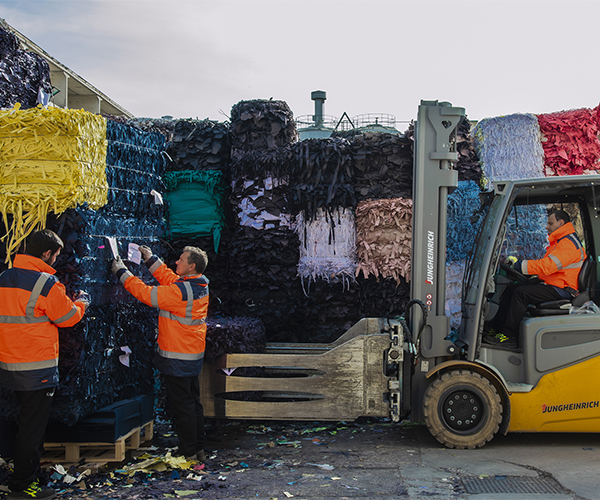
Who shall we meet at raw material storage? Luca who takes care of unloading and storing the raw materials for paper production, which in turn are prepared by Claudio and Denis for its production. In addition to the cellulose, our colleagues also prepare the trimming waste, i.e. a pre-consumer waste from previous productions. Claudio and Denis store this material and at the right time, it is reused to produce a new paper respecting a circular economy perspective.
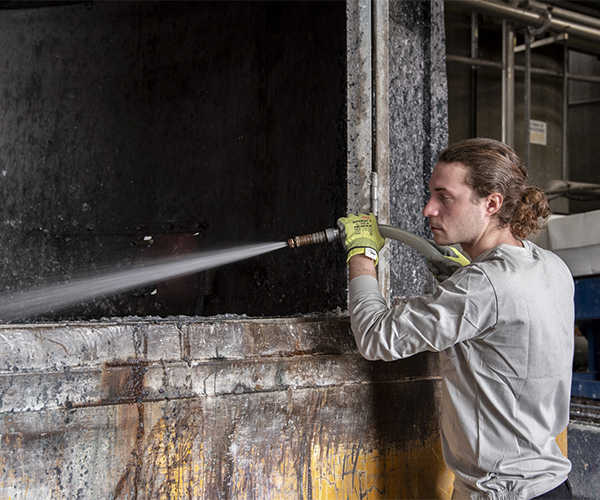
When the raw materials are ready, Francesco looks after the pulper! The pulper is a large machine in which the paper recipe is prepared; the different types of cellulose are mixed with a precise amount of water and it is then ready to be transferred onto the next stage.
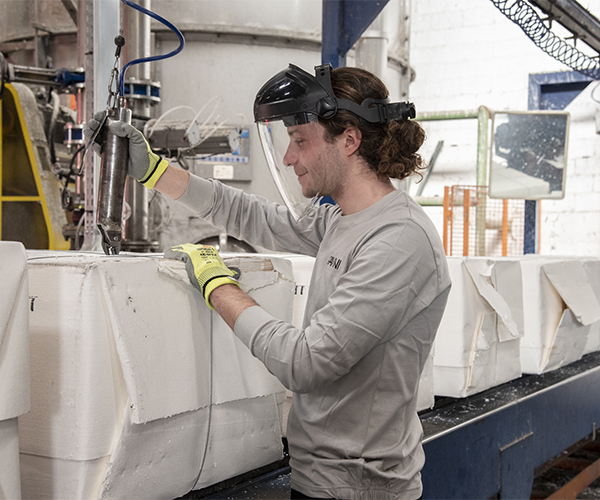
Francesco frees the bales of cellulose from wires with an air shear, to prepare them for loading. The pulper is loaded by conveyor belt.
Another task is the cleaning of the machinery: this is to eliminate any the colour residues from previous productions and would compromise the high quality of our papers.
But where does this stock then go? The wet stock mixture is transported via pumps in the headbox; from here it flows on to the machine wire where it spreads to form a continuous sheet of paper. Stefano adjusts both the headbox and the wire: their speed and the amount of pulp are crucial to determine the weight and formation of the paper. The water that is present begins to drain through gravity as well as by the suction boxes and starts to dry the sheet.
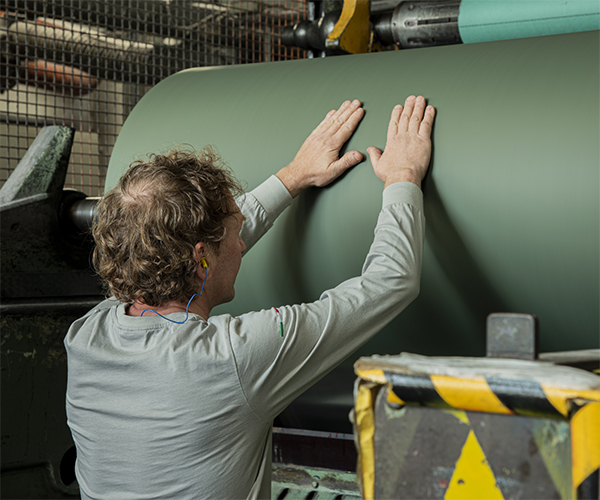
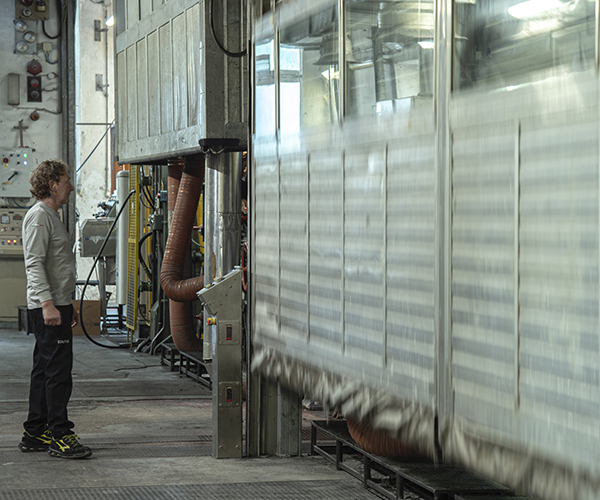
The sheet then passes through the wet felts, i.e. rollers to further drain the water through pressure. At this point the paper passes around large hot cylinders to evaporate the water and to dry the sheet.
In the size press, substances are uniformly sprayed to improve the paper, for example starch is spread on the surface to improve print performance. The sheet now passes again through hot cylinders for its final drying. If the type of paper requires it, the surface is smoothed by pressure from some calender rollers.
Even though the sheet of paper is now formed, its journey hasn’t finished yet!
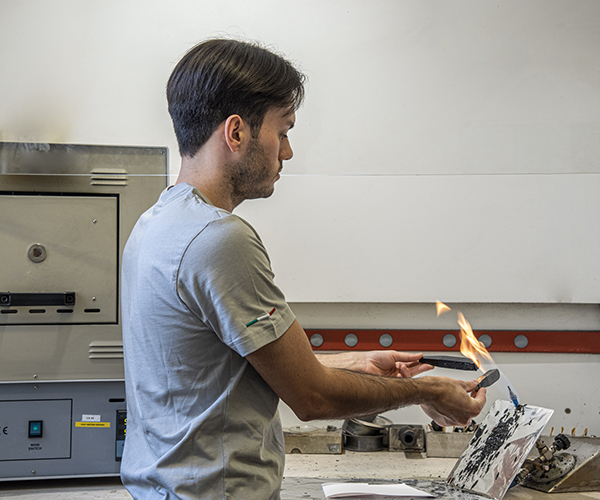
To obtain high quality papers control is essential! We meet Gioele, our young laboratory analyst. When the paper machine finishes a production batch, Gioele goes into production to take paper samples. Once in the laboratory, he checks the colour of the sample with the spectrophotometer: the colour taken from the machine must coincide with the desired target colour.
Gioele then carries out the tests prescribed by quality control, for example of thickness, smoothing, weight, porosity, resistance and ash content. The data is recorded on the computer and sent to the paper machine for verification.
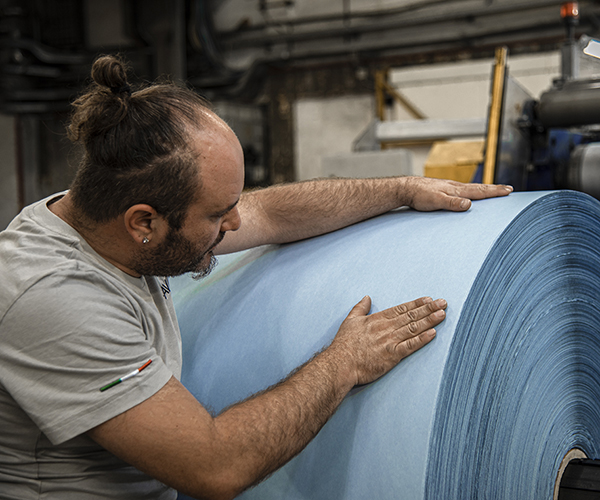
Some papers can then have a texture formed on the surface: here we meet Derry!
When the paper comes out of the paper machine it is on a reel with a smooth surface which can be enhanced by a textured design. This process, embossing, is done using two cylinders.
The reel of paper is loaded onto the embossing machine: The upper cylinder, called the engraver, “squeezes” the paper into the lower cylinder, called the counter-cylinder, which is softer, leaving a clear and precise mark on the surface of the paper.
Coating is a surface treatment that creates particular effects on paper: metallic, satin, rubberized, glossy, opaque… a multitude of possibilities!
To obtain the desired effect, two key and interrelated parameters must be determined. The viscosity of the coating represents the most important parameter and determines the final result. The second parameter to check is the colour of the paper, which also depends on the amount of coating, and therefore amount of pigment, spread on the surface of the paper.
The coating is spread across the surface by applicator cylinders and the excess is removed by a calibrated jet of air: An air knife. The paper passes into the coating ovens where the coating that was spread on the surface is dried.
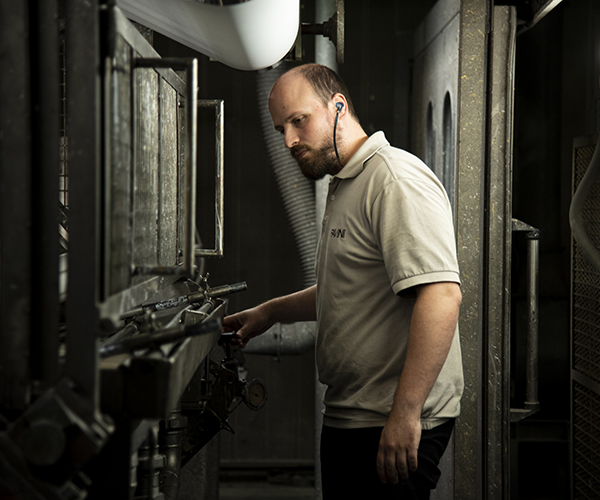
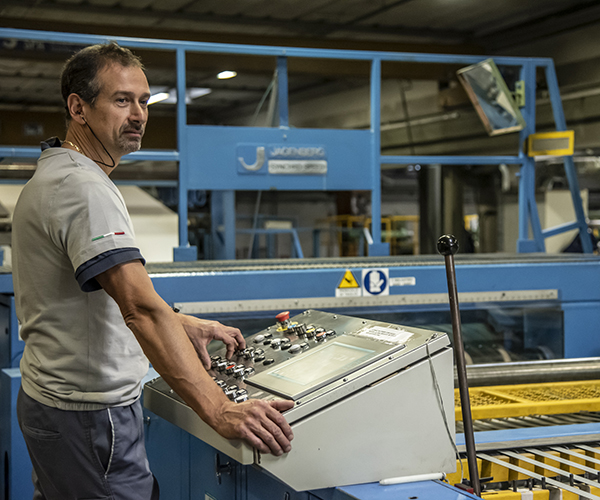
When the paper comes out of the paper machine, or embossing machine, it is on the reel. To be sold in sheets it must therefore be cut and here is where we meet Paolo.
The paper is spread out through some rollers and enters the cutting unit where it is cut lengthwise and crosswise. The resulting sheets can then be ream packed or flagged.
Whether packed or flagged, the paper then passes into the heat-shrink oven where it is wrapped in a protective film. Furthermore, in this phase a label is automatically created with a tracking code enabling each of its specific paper production phases to be retraced.
Did you understand how paper is made? To see the complete video and all the episodes of #HowFavinipaperIsMade visit and follow our YouTube channel


